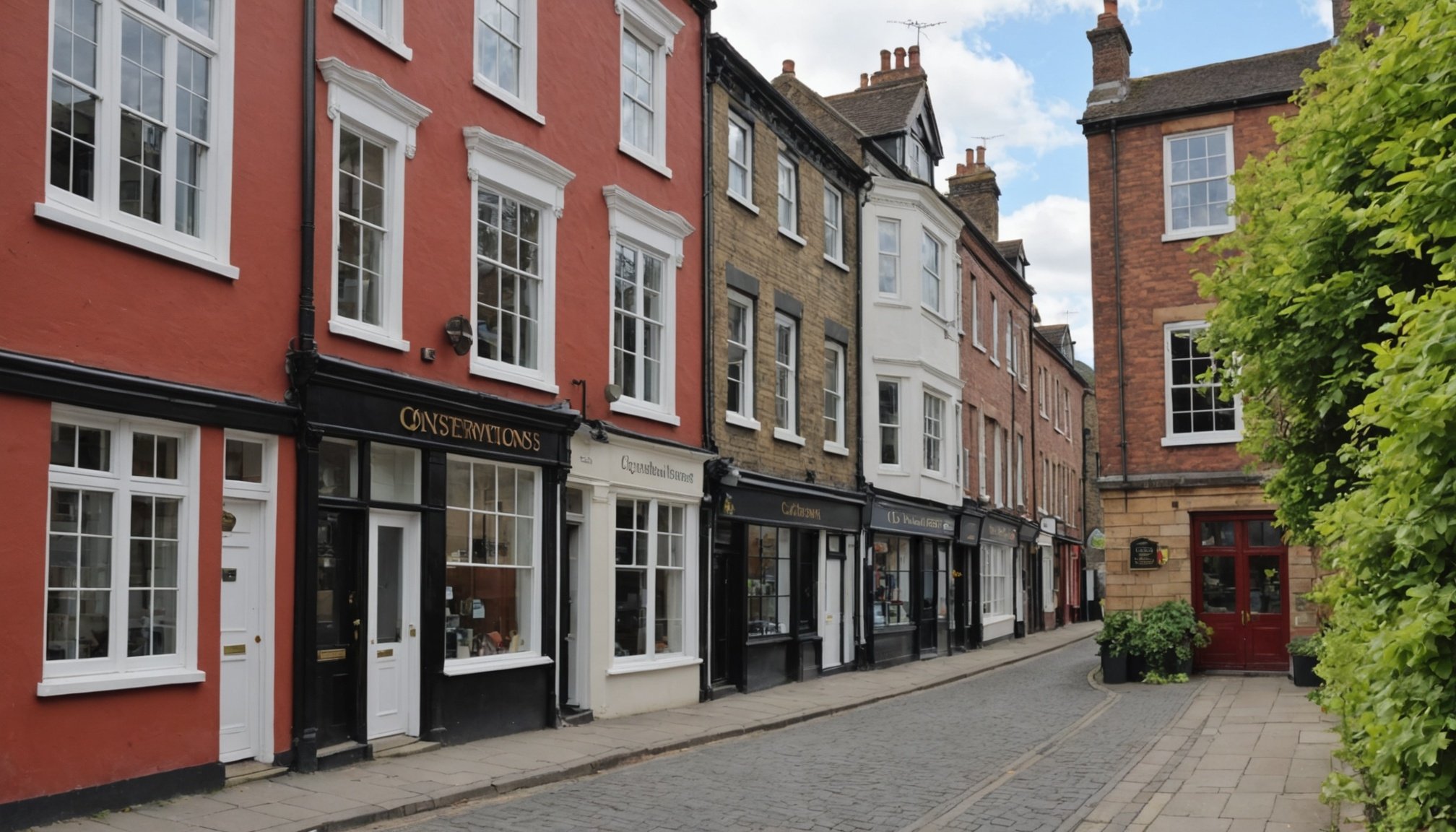Understanding the Legal Consequences of Modifying Property Exteriors in Bristol’s Conservation Areas to Conservation Areas in Bristol
Bristol, a city rich in historical and architectural heritage, is home to several conservation areas that are protected to preserve their unique character and aesthetic appeal. When it comes to modifying property exteriors within these areas, it is crucial to understand the legal implications and the stringent regulations that apply.
Conservation areas are designated by local authorities under the Planning (Listed Buildings and Conservation Areas) Act 1990. These areas are identified for their special architectural or historic interest, and any changes to properties within them must be carefully considered to ensure they do not harm the area’s character.
Avez-vous vu cela : Key Features to Consider When Searching for Your Ideal Family Home in Sheffield
Planning Permission and Development Rights
When is Planning Permission Required?
In conservation areas, the rules regarding planning permission are more stringent compared to other areas. Here are some key scenarios where planning permission is typically required:
- External Alterations: Any external changes, such as installing new windows, adding a rear extension, or altering the facade of a building, usually require planning permission. This is because these changes can impact the visual integrity of the conservation area[3].
- Listed Buildings: If your property is a listed building, even minor external changes may need permission. Listed buildings are protected by law, and any alterations must be approved by the local planning authority and, in some cases, by the Secretary of State[3].
- Conservation Area Consent: In addition to planning permission, you may need conservation area consent for certain types of work, such as demolishing a building or making significant changes to the exterior.
Permitted Development Rights
While planning permission is often required, there are some instances where permitted development rights apply. These rights allow for certain types of development without the need for planning permission, but they are limited in conservation areas.
Avez-vous vu cela : Essential Legal Guidelines for Establishing a Private Well at Your New Yorkshire Home
- General Permitted Development Order (GPDO): This order outlines the types of development that can be carried out without planning permission. However, in conservation areas, the GPDO is often restricted or modified to protect the area’s character. For example, the addition of a rear extension might be allowed under permitted development rights in other areas but may require planning permission in a conservation area[3].
Types of Restrictions in Conservation Areas
Common Obligations Protected as Local Land Charges
Local land charges, which include various restrictions and prohibitions on property use, are particularly relevant in conservation areas. Here are some common obligations you might encounter:
- Conditional Planning Permissions: These are the most common type of local land charge and can include conditions such as matching exterior finishes to the existing building or ensuring that the development does not harm the area’s character[1].
- Listed Buildings and Conservation Areas: Properties within these areas are subject to strict controls to maintain their historical and architectural integrity.
- Tree Preservation Orders: These orders protect trees that are considered important to the area’s character and can restrict any work that might harm them.
- Smoke Control Zone Conditions: These conditions ensure that any development complies with local air quality standards.
Example of Restrictions in Bristol
In Bristol, conservation areas such as the Clifton Village or the Harbourside are subject to these restrictions. For instance, if you plan to convert a garage in one of these areas, you would need to ensure that the conversion does not alter the exterior appearance of the property significantly. Here is an example of what you might need to consider:
- Architectural drawings showing the proposed conversion, including floor plans, elevations, and cross-sections.
- A design and access statement explaining how the conversion will impact the surrounding area.
- Photographs of the existing garage and surrounding property.
- Details of any trees that may be affected by the conversion[3].
The Process of Obtaining Planning Permission
Submitting a Planning Application
To obtain planning permission, you need to submit a detailed application to your local planning authority. Here’s what you should include:
| Component | Description |
|---|---|
| Architectural Drawings | Detailed drawings of the proposed conversion, including floor plans, elevations, and cross-sections. |
| Design and Access Statement | An explanation of your plans and how the conversion will impact the surrounding area. |
| Photographs | Photos of the existing garage and surrounding property. |
| Tree Details | Information about any trees that may be affected by the conversion. |
| Application Fee | A fee, typically between £200 to £300, depending on the type of application. |
Review and Decision Process
Once your application is submitted, the local authority will review it to ensure it meets the necessary regulations and does not harm the conservation area.
- Review Period: The review process typically takes 6 to 8 weeks.
- Decision Notice: If your application is approved, you will receive a decision notice listing any conditions that must be met. These conditions might include matching exterior finishes to the existing house or providing a certain number of parking spaces[3].
Consequences of Non-Compliance
Enforcement Action
If you carry out modifications without the necessary permissions, you could face enforcement action from the local authority.
- Enforcement Period: Local authorities can enforce planning regulations for unauthorised building works for up to 4 years after completion. If the work was done without consent, the council can require you to either obtain retrospective permission or return the property to its original state[3].
- Legal Action: Failure to comply can result in legal action, which can be costly and time-consuming.
- Impact on Property Value: An unauthorised modification can reduce the property value, especially if the local authority orders it to be removed or reverted to the original state. Valuers and estate agents consider the legal status of any home improvements when determining an asking price[3].
Practical Advice and Considerations
Consulting with Professionals
Before embarking on any exterior modifications, it is advisable to consult with professionals such as architects, planners, and solicitors who are familiar with conservation area regulations.
- Architects: They can help design your project in a way that complies with local regulations and preserves the area’s character.
- Planners: They can guide you through the planning application process and ensure your proposal meets all the necessary criteria.
- Solicitors: They can advise on legal aspects, including local land charges and the potential consequences of non-compliance[5].
Community Engagement
Engaging with the local community and stakeholders can also be beneficial. Understanding the concerns and values of the community can help you design a project that is more likely to be approved.
Example from Bristol
In Bristol, community engagement has been crucial in the redevelopment of areas like the Harbourside. For instance, when planning to convert a garage in this area, it would be wise to engage with local residents and business owners to ensure that your project aligns with the community’s vision for the area.
Modifying property exteriors in Bristol’s conservation areas is a complex process that requires careful consideration of the legal and regulatory framework. Understanding the need for planning permission, the restrictions imposed by local land charges, and the consequences of non-compliance is essential for any property owner or developer.
By following the guidelines outlined above and seeking professional advice, you can ensure that your project not only complies with the law but also contributes positively to the preservation of Bristol’s rich architectural heritage.
Additional Resources
For further information, you can refer to the following resources:
- HM Land Registry Local Land Charges Programme: This provides detailed information on local land charges and the process of migrating local land charges to a national register[1].
- Building Regulations in the United Kingdom: This resource outlines the building regulations that must be complied with, including those related to safety and sustainability[2].
- Local Planning Authority Guidelines: Your local planning authority will have specific guidelines and resources available for projects within conservation areas.
By being informed and proactive, you can navigate the complexities of modifying property exteriors in Bristol’s conservation areas with confidence.
Overview of Conservation Areas in Bristol
Conservation Areas are specially designated zones aimed at preserving the unique historical and architectural characteristics of a locality. In Bristol, these areas are established to maintain the city’s rich heritage and ensure that any changes align with its distinctive character. These areas are crucial for protecting properties with historical value from inappropriate alterations that could harm their traditional charm.
The primary purpose of a conservation area is to enhance and safeguard the architectural ambiance of the region. This is achieved by implementing specific Bristol regulations that control new development, demolition of buildings, and alterations to existing properties. These rules are particularly stringent in areas with significant historical importance or those showcasing unique architectural styles.
Property preservation in conservation areas focuses on maintaining the aesthetic and historical elements that make these sites special. Key characteristics often include traditional building materials, period architecture, and scenic settings. Understanding these elements helps homeowners and developers respect the regulations and contribute to preserving Bristol’s historical legacy. Balancing modern development with the preservation of the past ensures Bristol’s conservation areas remain culturally and architecturally significant for future generations.











